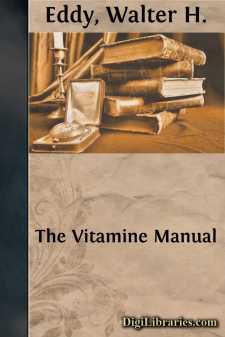Categories
- Antiques & Collectibles 13
- Architecture 36
- Art 48
- Bibles 22
- Biography & Autobiography 813
- Body, Mind & Spirit 142
- Business & Economics 28
- Children's Books 17
- Children's Fiction 14
- Computers 4
- Cooking 94
- Crafts & Hobbies 4
- Drama 346
- Education 46
- Family & Relationships 57
- Fiction 11829
- Games 19
- Gardening 17
- Health & Fitness 34
- History 1377
- House & Home 1
- Humor 147
- Juvenile Fiction 1873
- Juvenile Nonfiction 202
- Language Arts & Disciplines 88
- Law 16
- Literary Collections 686
- Literary Criticism 179
- Mathematics 13
- Medical 41
- Music 40
- Nature 179
- Non-Classifiable 1768
- Performing Arts 7
- Periodicals 1453
- Philosophy 64
- Photography 2
- Poetry 896
- Political Science 203
- Psychology 42
- Reference 154
- Religion 513
- Science 126
- Self-Help 84
- Social Science 81
- Sports & Recreation 34
- Study Aids 3
- Technology & Engineering 59
- Transportation 23
- Travel 463
- True Crime 29
Our website is made possible by displaying online advertisements to our visitors.
Please consider supporting us by disabling your ad blocker.
The Vitamine Manual
by: Walter H. Eddy
Description:
Excerpt
HOW VITAMINES WERE DISCOVERED
In 1911 Casimir Funk coined the name Vitamine to describe the substance which he believed curative of an oriental disease known as beri-beri. This disease is common in Japan, the Philippines and other lands where the diet consists mainly of rice, and while the disease itself was well known its cause and cure had baffled the medical men for many years. Today in magazines, newspapers and street car advertisements people are urged to use this or that food or medicament on the plea of its vitamine content. In less than ten years the study of vitamines has increased to such an extent that it is difficult to find a chemical journal of any month of issue that does not contain one or more articles bearing on the subject. Such a rapid rise to public notice suggests an importance that justifies investigation by the laity as well as the chemist and in the pages that follow has been outlined in simple language the biography of this newest and lustiest of the chemist's children.
Dr. Funk christened one individual but the family has grown since 1911 to three members which for lack of better names are now called vitamines "A," "B," and "C." There are now rumors of another arrival and none dare predict the limits of the family. Had these new substances been limited to their relation to an obscure oriental disease they would have of course commanded the medical attention but it is doubtful whether the general public would have found it worth while to concern themselves. It is because on better acquaintance they have compelled us to reform our ideas on nutrition of both adults and babies and pick out our foods from a new angle, that we accord them the attention they demand and deserve. Granting then, their claim upon our attention, let us review our present knowledge and try to see with just what we are dealing. This will be more easily accomplished if we consider the vitamines first from the historical side and reserve our attention to details of behavior until later.
A limited diet of polished rice and fish is a staple among the peoples of the Orient. When the United States Government took over the Philippine Islands in 1898 it sent there a small group of scientists to establish laboratories and become acquainted with the peculiarities of the people and their troubles. One of the first matters that engaged their attention was the condition of the prisons which were most unsanitary and whose inhabitants were poorly fed and treated. Reforms were put into operation at once and the sanitary measures soon changed these prisons to places not quite so abhorrent to the eye. In trying to improve the diets of the prisoners little change was made in their composition because of the native habits but the reformers saw to it that the rice fed should be clean and white. In spite of these measures the first year saw a remarkable increase in the disease of beri-beri, and the little group of laboratory scientists had at once before them the problem of checking a development that bid fair to become an epidemic....


